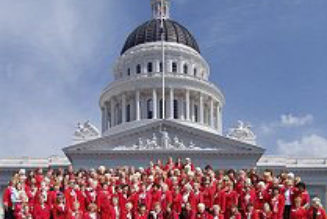
April 6, 2021
California Federation of Republican Women
Sue Blair, President
Submitted by the CFRW Legislative Analyst Committee
Gretchen Cox, Elaine Freeman, Lou Ann Flaherty, Val Emick
SPECIAL EDITION
UPDATE ON CALIFORNIA REDISTRICTING:
WHY IT MATTERS AND HOW YOU CAN PARTICIPATE!
Redistricting is the once every decade practice across the U.S. of redrawing state and federal voting boundaries, with the goal being equal distribution of voters, based on the most current census information. The results impact who represents local voters in the U.S. House of Representatives, the State Board of Equalization (tax and fee districts), and the state Senate and Assembly, based on changes in population and demographics, among other things.
In California, the census data is also used to redraw boundaries for county supervisor districts, as well as cities, school districts and other agencies that elect representatives by geographical districts. The Federal Voting Rights Act also requires that in areas with a high population of minority voters, the lines must be drawn to keep enough of each minority group in a district to give them a chance of electing one of their own to represent them, while at the same time not “packing” a district artificially.
In the past, redistricting in most of the U.S. was handled by State Legislators. This led to accusations of “gerrymandering”- drawing district lines to favor a particular political party. In 2008, California voters passed the Voters First Act, which resulted in the formation of a Citizens Redistricting Commission. These are regular citizens from around the state, and they have the final say in how the district lines will be drawn.
Their decisions are made using census data, federal and state laws and guidelines, and input from the public. Their meetings are open to the public and they are required to take public input. They are not allowed to use voter registration information or any partisan data to draw lines, and the legislators are not allowed to communicate directly with commissioners about redistricting. In fact, contact from politicians is only allowed during public meetings. For more information on the California Citizens Redistricting Commission, and the Voters First Act, go to https://www.wedrawthelinesca.org.
In determining what the census information shows and how best to achieve accurate and fair redrawing of boundaries, the California Citizens Redistricting Commission must also consider “Communities of Interest”, among other factors. They must, as much as possible, keep those communities together. Splitting these types of communities up is seen as a negative, minimizing their voices. A community of interest is, as broadly defined by California law “a contiguous population which shares common social and economic interests that should be included within a single district for purposes of its effective and fair representation.”
Official examples are a little vague because officials want to leave it open to interpretation, and open for them to get the people to tell them how they think their community fits that definition and where they are. An example, however, might be something like a historic community, or a mountain community- places where people share a common lifestyle and/ or geographic or environmental concerns. It could also be a minority group.
By law, these communities cannot be based on political parties, or who their representatives currently are. Due to the pandemic, the final results of the California Citizen Redistricting Commission may not be available until mid-December of this year, and possibly not until February 2022.
GET INVOLVED!!!
The good news about the delay is that it gives all of us more time to contribute our input to this process. A new tool, https://drawmycacommunity.org allows anyone interested to submit information on what they think their ideal political community is and why the state should consider their ideas. Residents are not limited on the number of submissions, because one person could belong to more than one community of interest. You can also attend virtual commission meetings and offer comments verbally or in writing.
The More We Know…
Do you know how a legislative bill becomes a law in California?
Click here for a simple explanation.
For further information on any of the bills mentioned here or others, CLICK HERE and simply enter the bill # or keywords where designated.
CLICK HERE to find/contact your local Legislators to inquire about or let them know your opinion about bills or issues.
Questions? Please e-mail legislativeanalysts@cfrw.org
Forward this email to a friend

